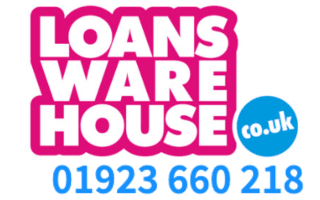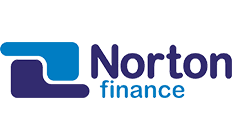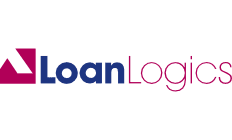
Table: sorted by best APRC from each lender









If you borrow £43,000 over 16 years at a rate of 10.25% variable, you will pay 192 instalments of £505.18 per month and a total amount payable of £96,994.56. This includes the net loan, interest of £49,404.56, a broker fee of £3,995 and a lender fee of £595. The overall cost for comparison is 12.7% APRC variable.
If you need to borrow money to pay for extensive home renovations or consolidate existing debt, a secured loan could enable you to borrow a larger sum of money over a longer term than an unsecured loan. Here’s how they work.
What are secured loans?
Secured loans (also known as homeowner loans or second-charge mortgages) allow you to use the equity in your home as security to borrow money. If you can’t keep up with your loan repayments, the lender could repossess your home and sell it to recoup its money.
There’s a little extra admin involved with a secured loan as you’ll need to get your home valued, and the process can take a little longer than it would with an unsecured loan. But you can typically borrow a larger sum (over £10,000) over a longer term (up to 25 years or more), and you’ll benefit from more competitive interest rates.
In figures from the Finance and Leasing Association, it’s possible to see the post-pandemic trends in homeowners taking out second charge mortgages. Some homeowners may be exploring secured loans at the moment as a way to improve their homes without disrupting their main (first charge) mortgage.
Overview of the secured loans we compare
| Loan amounts | From £5,000 to £5,000,000 |
|---|---|
| Applicant ages | From 18 to 85 years |
| Loan terms | From 1 to 40 years |
| Maximum LTV | Up to 100% |
| Representative APRCs | From 6.1% to 22.9% |
| Lender fee | From £299 |
How do secured loans work?
A secured loan lets you borrow a lump sum of money, which you repay, plus interest, in monthly instalments over a set term. However, you’ll also need to offer up a personal asset as collateral. In theory, that could be anything – a car, a boat, a priceless piece of art, etc. – but in reality, it’s usually a property (and that’s what we focus on in this guide).
If there’s already a mortgage on that property (which, in itself, is probably the most common form of secured lending), then an additional loan against the property has what’s known as a “second charge” over it. In other words, that lender would be next in line (after the main mortgage provider) to recoup its losses from the property’s sale.
Whatever you use as security, it’s crucial you’re aware it could be repossessed if you fall behind on your loan repayments. That’s why you’ll always see the standard “Your home is at risk if you do not keep up repayments…” warning on adverts for loans involving security.
How does the valuation process work?
When considering your secured loan application, the lender may want to carry out checks on the property and is likely to request a valuation. This requires a surveyor to visit the property and determine its value based on factors like its location, condition and quality, as well as current market conditions. This valuation might not match up with your own valuation of the property or the amount you paid to purchase the house.
Eligibility criteria for a secured loan
To apply for a secured loan, you will usually need to own enough equity in your property to cover the amount you are borrowing. For example, if you wish to borrow £10,000, you’ll need at least £10,000 of equity in your house to use as security against the loan amount. Some lenders require you to have more than this.
You will also need to meet the following criteria to qualify for any loan product in the UK:
- Be at least 18 years old
- Be a UK resident
The lender you choose to borrow from might have additional eligibility requirements, make sure you read and understand these completely before you apply, as this could affect your credit score.
Reasons for getting a secured loan: is a secured loan right for me?
You might want to take out a secured loan if you need to borrow a large sum of money – more than an unsecured loan can offer you. However, you’ll need a suitable asset to qualify, and you’ll need to be sure you can afford to meet your loan repayments. If not, you risk losing that asset.
Some people choose to take out a secured loan rather than remortgage because their current mortgage has a very low fixed rate deal or they would pay high early repayment charges to get out of their existing mortgage early. You might also prefer to avoid remortgaging if your credit rating has taken a hit since your original mortgage.
What can you use a secured loan for?
Secured loans are perhaps most popular with those looking to consolidate debt. By taking out a debt consolidation loan, you can pay off the remainder of your existing loans or debts using the new funds and then continue to make one repayment on the new loan. If your new loan has a lower rate of interest, you’ll also save money.
However, secured loans can also be a way to access funds to pay for a large expense, such as extensive home renovations (like a loft conversion).
How much do secured loans cost?
How much your loan costs depends on the amount you’re borrowing, the interest rate charged and the term over which you’re borrowing. Borrowing over a longer term can keep your monthly repayments down but also means you pay more interest, making it more expensive overall.
For example:
If you were borrowing £25,000 over a term of 25 years at an interest rate of 9.9%, you’d repay £225 a month, or £67,624 in total. That’s £42,624 in interest.
However, if you borrowed the same amount over 15 years at an interest rate of 9.9%, you’d pay slightly more per month at £267. But in total, you’d pay £48,082, with £23,082 of that being interest.
Keep in mind that some secured loans also charge arrangement fees, as well as valuation fees, so you’ll need to factor these in, too.
What’s the difference between a secured and unsecured loan?
Both secured and unsecured loans let you borrow a lump sum of cash that’s repaid over a set term in monthly instalments, with interest added. But there are some key differences, as the table below shows:
| Secured loan | Unsecured loan | |
|---|---|---|
| Collateral | You’ll need to use an asset as collateral, so there is less risk for the lender. | No collateral is required, so there is more risk for the lender. |
| Loan amount | You can typically borrow larger sums of up to £100,000. | You can usually borrow smaller sums of up to £25,000. |
| Loan terms | You can borrow over a longer term – say up to 25 or even 30 years. | You can typically only borrow over a term of up to 7 years. |
| Interest rates | Interest rates can be variable, meaning your monthly repayments might change. Interest rates can also be lower than unsecured loans. | Interest rates are often fixed, so monthly repayments stay the same. Interest rates depend on your credit score – if your credit score is poor, interest rates can be high. |
| Homeowner status | You usually need to be a homeowner and have sufficient equity in your home to qualify. | You don’t need to be a homeowner or own an asset to qualify. |
| Approval time | Can take longer for the loan to be approved. | The application process is usually pretty quick. |
Types of secured loans
Some of the different types of secured loans are as follows:
- Mortgages. With a mortgage, the amount you want to borrow is secured against the property. You then make monthly repayments over a set term to pay back the amount borrowed, plus interest.
- Second charge mortgages. If you still have an existing mortgage, a second charge mortgage can be secured on any equity you have in your home. They can also be called homeowner loans.
- Bridging loans. This type of loan can bridge the gap between buying a new property and selling an existing one.
- Car loans or logbook loans. You might also be able to borrow money against the value of your car.
How do secured loan repayments work?
Each loan repayment you make will be made up of a portion of capital (the amount borrowed) and some interest. If your interest rate is fixed, your monthly repayments remain the same for the loan’s duration. But if it’s variable, your interest rate, and, therefore, your monthly loan repayments, could move up and down in line with movements in the Bank of England base rate.
Alternatives to homeowner loans
Depending on how much you need to borrow, some of the alternatives to secured loans include:
- Remortgaging. Rather than taking out a separate loan secured against your home, it might be better to remortgage, which means exiting your current mortgage and taking out a new one with different terms. However, you’ll need to factor in whether you’d need to pay an early repayment charge to get out of your existing mortgage deal early, as well as how much interest your new mortgage would charge and whether your credit rating has deteriorated since your original mortgage.
- A second mortgage from your current bank. While your mortgage issuer might not let you “top-up” your current mortgage, they might let you run a separate, second mortgage alongside it. But it’s worth comparing whatever deal they offer you against those from the specialist lenders above to make sure you get a good deal.
- A personal loan. If you don’t need to borrow as much as you can with a secured loan, an unsecured personal loan might be more suitable. You’ll usually need a good credit rating to get the best deals, and you’ll typically need to repay your loan over 1 to 7 years. But it’s a less risky way to borrow.
- Equity release. If you’re over 55 and a homeowner, you may wish to consider an equity release scheme, such as a lifetime mortgage, to access the funds tied up in your house.
- A credit cards. This is a more flexible way to borrow, but you can’t borrow as much as with a loan. However, credit cards can be a good option for spreading the cost of new purchases or consolidating existing debts, particularly if you can take advantage of a lengthy 0% offer.
How does a secured loan compare to remortgaging?
In some ways, they are quite similar. Should you default on your loan, your home could be repossessed with either option. However, if you have sufficient equity in your home, remortgaging could give you access to a wider range of deals at lower interest rates.
What is APRC?
Like mortgages, some secured loans come with an introductory fixed-rate period – say, 3.5% for 2 years – which then reverts to a variable rate. This, combined with product fees, can make it hard to put 2 secured loans side by side and know which is the better deal.
The APRC (annual percentage rate of charge) is designed to offer consumers a benchmark annual cost over the loan’s lifetime, taking into account the interest rates and periods, plus any fees involved.
Just to add an extra layer of complication, lenders normally tailor rates to the applicant. In other words, if they think you’re a higher risk, they might offer you a higher rate. A “representative” APRC is the APRC that at least 51% of customers are offered for a given product.
Another useful benchmark (and one that can be easier to get your head around) is the total cost of borrowing. This should be at, or near, the top of your list of factors for comparing homeowner loans.
Pros and cons of secured loans
Pros
- Larger sums. You can typically borrow more because securing your loan against an asset reduces the risk for the lender.
- Longer terms. Similarly, you might be able to spread repayments over a longer period.
- More competitive interest rates. Secured loans tend to come with lower rates than unsecured loans.
- Easier to get accepted for. If you have poor credit, a secured loan can be easier to get accepted for.
Cons
- Fees. You might have to pay an arrangement fee as well as a valuation fee.
- Interest rates can be variable. This means your monthly repayments can change.
- More expensive. Although rates might be cheaper, paying back your loan over a longer period means you’ll pay more interest overall.
- Need to be a homeowner. If you don’t have enough equity in your home, you won’t qualify.
- Higher risk. You could lose your home if you don’t keep up with your repayments.
What is a home equity line of credit (HELOC)?
A HELOC is a type of revolving credit that allows you to borrow against the equity in your home. If your application is successful, you’ll receive the funds as a line of credit. You can draw on these funds, up to your credit limit, over a set number of years, usually between 5 and 10. You’ll only ever pay interest on the amount you’ve borrowed, which means you won’t be charged interest on any funds left untouched.
How to compare secured loans
The best secured loan for one person might not be the best for another, but several factors can determine what the best secured loan is for your situation. You should consider the following when comparing secured loans:
- Total cost. The most important factor to consider when comparing almost any loan is the total cost. The APRC (which all lenders must calculate in the same way) is a good benchmark for what a loan will cost you each year – taking into account both interest and any mandatory fees. However, it’s better to look at the total cost, which shows you exactly how much you’ll repay over the loan’s term.
- Fees and repayment options. Check how much you might be charged for arranging the loan and whether you can make additional payments or pay off the entire loan amount early without penalty. This can save you interest.
- Length of term. The longer the term length, the lower your monthly repayments will be. However, the total cost of your loan will be more as you’re paying interest for longer. Choose the shortest term length you can, with monthly repayments that are affordable for you. Most lenders offer terms of up to 25 years, although some will stretch to 30 years.
- Eligibility. Before you apply, check the lender’s minimum criteria, which could include factors like age, residency, employment and income.
What do I need for a secured loan?
To get a secured loan, you’ll need a suitable asset for the lender to use as security. This is often your home but could be your car or a valuable piece of jewellery – its value needs to be enough to cover the loan amount.
You may also need to provide the following documents:
- Proof of ID such as a driving licence or passport
- Proof of address such as a utility bill
- Proof of employment and income
- Bank statements
How to apply for a secured loan
Once you’ve compared a range of lenders and found a secured loan that meets your needs, double-check that you’re eligible and then make your application.
Depending on the lender, you can generally apply for a secured loan online or by phone, providing the details and documents mentioned above. Once you’ve applied for a secured loan, the lender needs to check your credit history and verify the ownership of your property, as well as its market value. This process generally takes a couple of weeks.
Once you’re approved for a loan, the lender sends any relevant documents you’ll need to sign. The lender transfers the funds to you once it has received your signed documents.
Can I get a secured loan with bad credit?
If you have a bad credit rating, you might struggle to get accepted for some forms of credit. However, it’s still possible to get approved for a secured loan if you have a bad credit rating, as the security you need to provide reduces the lender’s risk.
By successfully paying off your secured loan, you could also improve your credit score and get better terms the next time you need to take out a loan or credit product.
But as with all forms of borrowing, if you miss repayments, you could harm your credit score further and with a secured loan, you could risk losing the asset you have secured your loan against.
Bottom line
Secured loans can enable you to borrow larger sums of money over a longer period. Because they are secured against an asset, they are less risky for the lender, which means they can be easier to get accepted for and interest rates can be more competitive.
However, secured loans are a much higher risk for the borrower and should always be considered with care. If you cannot meet your repayments, you could lose your home, so always ensure your loan would be affordable.
Frequently asked questions
Sources
Read more on Secured Loans
-
Compare 10-year loans
Find out how to apply for a 10-year personal loan, and how to get the best rates.
-
How to get a £150,000 loan
If you’re considering applying for a £150,000 personal loan, check out this guide which explains how to compare lenders and find the best deal.
-
How to get a £100,000 loan
If you’re considering applying for a £100,000 personal loan, check out this guide which explains how to compare lenders and find the best deal.
-
Secured debt consolidation loans
A secured loan can help you consolidate your existing debt by offering lower rates and more flexible loan terms.
-
Get a £70,000 loan with the best rate
Browse our expert tips on how to get approved for a £70,000 loan and find the best rate deal possible.
-
Compare £60,000 loans
Learn how to find the best deal on a £60,000 loan.
-
£80000 loan calculator
Discover how to find the best interest rate for an £80,000 personal loan, as well as how to boost your chances of being accepted for one.
-
How to get a £50,000 personal loan
If you’re considering applying for a £50,000 personal loan, check out this guide which explains how to compare lenders and find the best deal.
-
How to get a £40,000 loan with the best rate
Looking for a great deal on a £40,000 personal loan. We explore all your options and explain how to find the best one.
-
Get a £25,000 loan with the best rate
Compare live rates, fees and eligibility criteria from a range of lenders to get the right loan for your needs at the lowest overall cost.
